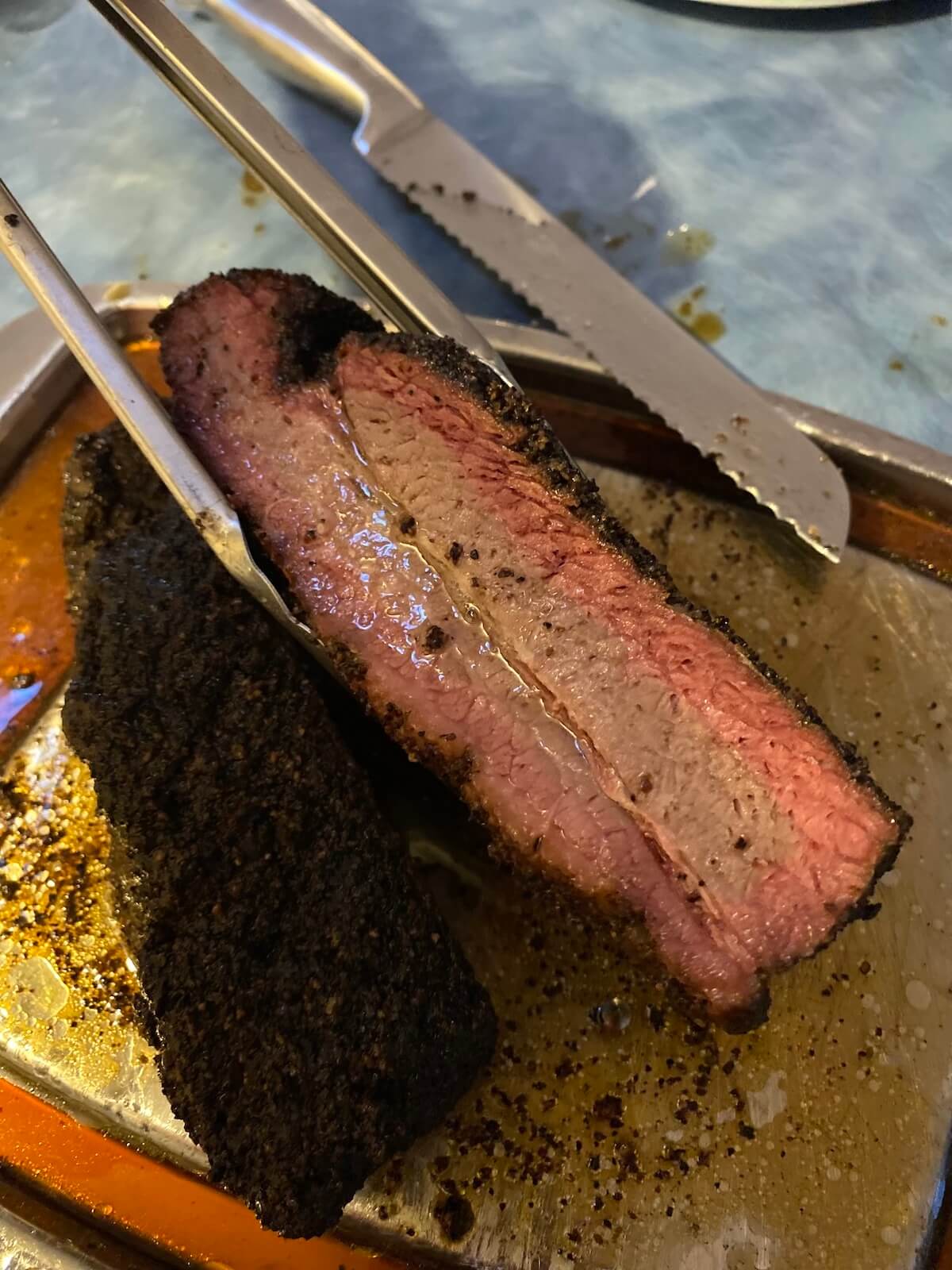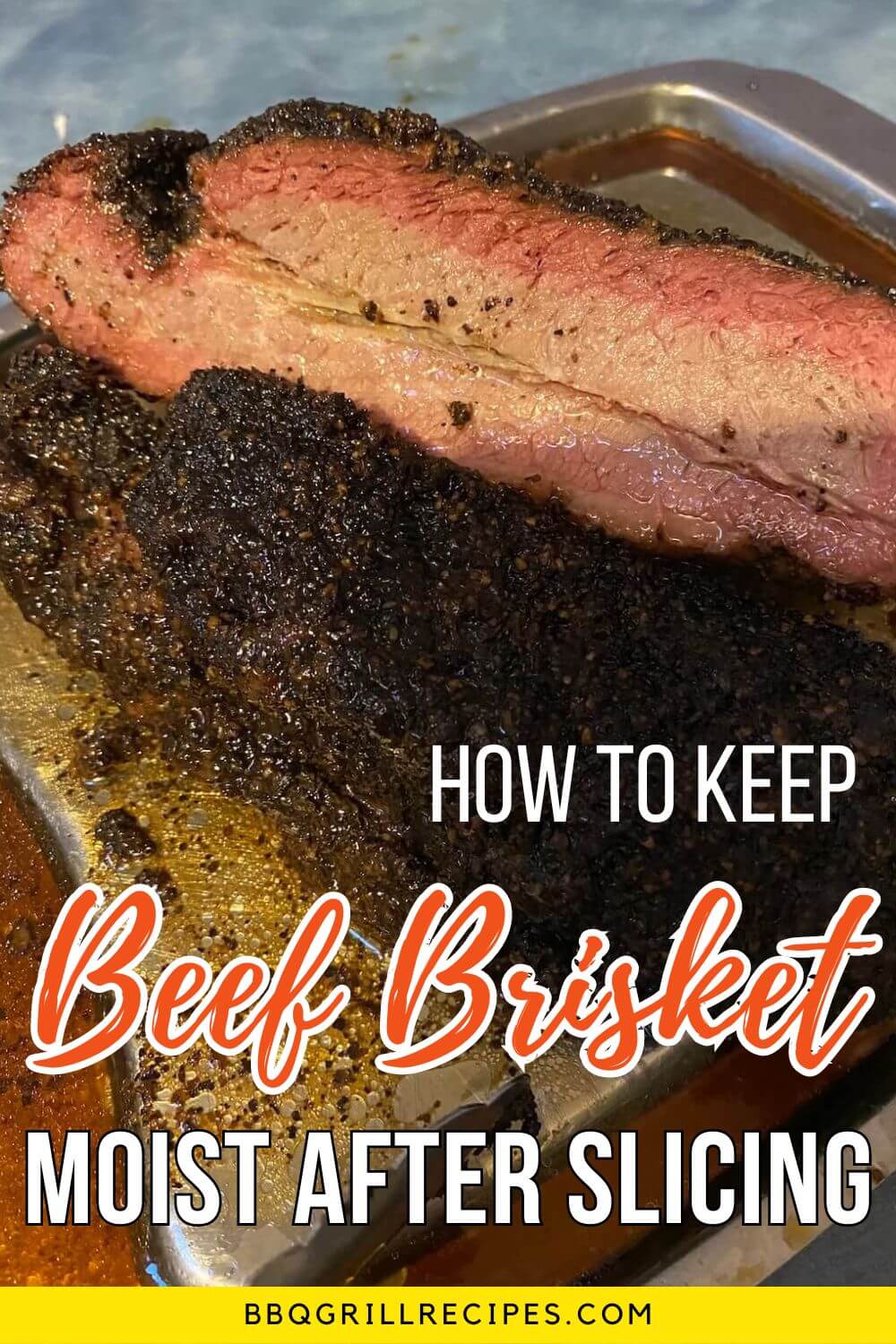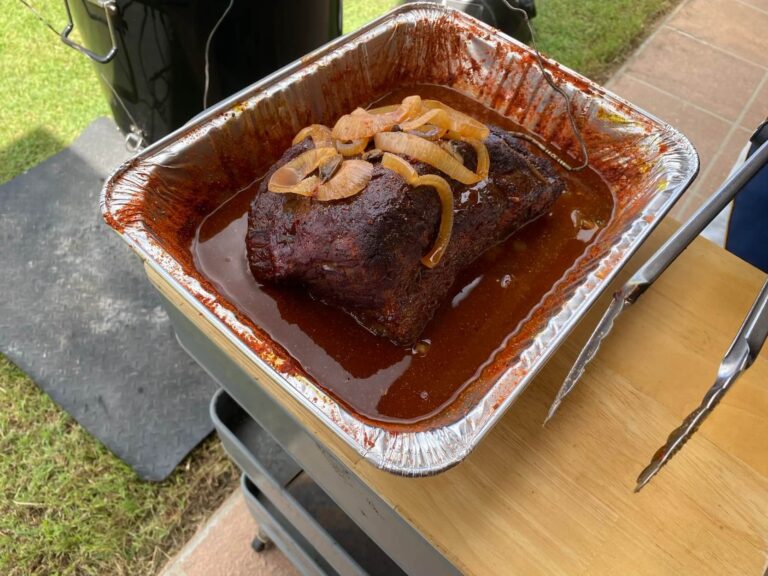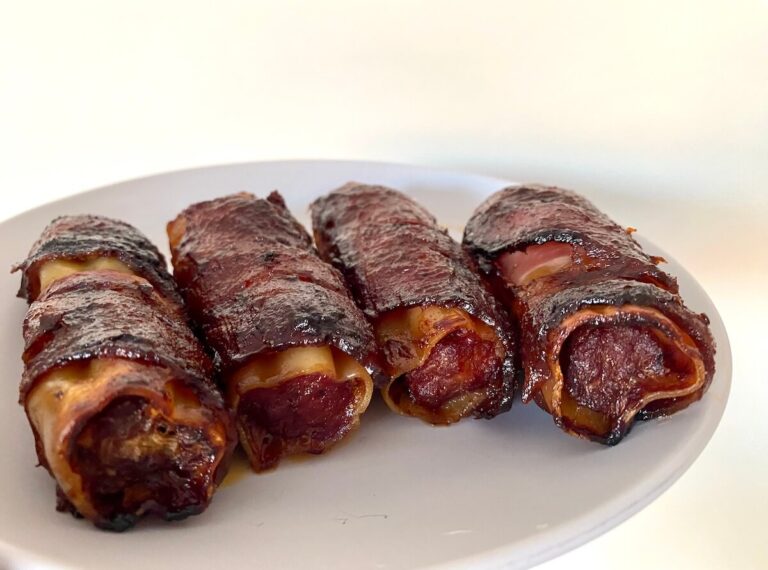Wondering how to keep brisket moist after slicing? If there’s one thing any BBQ aficionado can agree on, it’s the irreplaceable role of beef brisket in the great tradition of barbecuing.
Known for its rich, beefy flavour, crispy bark exterior and melt-in-your-mouth tenderness that results from slow and low cooking, brisket is nothing short of a culinary star at any BBQ.
But there’s a common challenge that can quickly ruin those long hours spent smoking a brisket: how to keep brisket moist after cooking.
This guide will make sure you can enjoy your moist brisket with tips to avoid that dreaded moisture loss.
What Is Brisket?

Brisket, a cut of meat from the lower chest or breast of beef, is a tough cut of meat that requires long, slow cooking to break down the tough fibres and become tender.
It is a favourite for BBQ because it can be smoked or cooked low and slow on the grill, resulting in a rich and succulent flavour.
It’s loaded with connective tissue, which can be a challenge to break down, and if not cooked correctly, you could end up with a tough and chewy disaster – and after spending that many hours slow cooking it to perfection, there is nothing worse!
The magic of tender brisket lies in slow cooking, a process that patiently breaks down those stubborn tissues into gelatin, resulting in that delectably tender texture.
However, once you slice into this juicy goodness, it tends to dry out quickly.
This is mostly due to brisket’s lean nature and the fact that slicing exposes the meat’s inner moisture to air.
Related: Try this smoked and braised beef brisket recipe
Why is Brisket Moisture Important?
The key to delicious brisket lies in its moisture. When cooked correctly, the fat content of a beef brisket transforms into a delicious juice that can elevate any dish.
If your brisket is too dry, it loses its tenderness and flavour, making it difficult to chew and enjoy.
Moreover, brisket is a relatively expensive cut of meat these days, since it really is the king of the smoker, so it’s even more important to make sure you don’t waste any of its deliciousness by losing moisture after slicing.
How to Keep Brisket Moist After Slicing

So how do you keep your brisket moist even after slicing? Here are some tips that we will go into more detail further down the page:
- Choose the right cut of brisket
- Use the right technique when cooking brisket
- Spritz it with apple cider vinegar
- Rest your smoked brisket before cutting
- Do not slice before you’re ready to eat
- Only cut what you need
1. Choose The Right Brisket Cut
Selecting the right cut of brisket is the first step towards keeping your BBQ masterpiece succulent.
The two most common cuts are the flat and the point, both parts that make up the full brisket:
- The flat is leaner, less marbled with fat, and has a more uniform shape and thickness. It’s also easier to slice neatly and it benefits from the added moisture during cooking.
- The point is fattier and has more marbling, making it richer in flavour yet also trickier to slice without losing its juiciness.
When shopping for brisket, look for one with a deep red colour that’s evenly distributed across the meat.
Also, make sure that the fat cap is still intact and a good portion of fat remains in between the grain.
Picking the right cut is paramount. The quality of the meat will give you a better end result, no matter your cooking techniques.
Aim for a brisket with a thick layer of fat, also known as the ‘fat cap’. This fatty layer self-bastes the meat during cooking, helping to keep the meat moist.
2. Cook Your Brisket The Right Way

The most important step to moist brisket begins well before you even think about slicing – it starts with the cooking process.
Additionally, consider marinating your brisket, which can introduce more flavours while also helping to tenderize the meat.
Slow cooking at low temperatures is another pro tip.
Aim for a 100 – 120-degree Celcius smoker low temperature on your meat thermometer.
Cook to feel.
The brisket needs to probe like butter when a skewer is inserted in the thickest part. If it doesn’t, it’s not ready.
For the finished smoked brisket, the internal temperature of the brisket should be around 93 – 96 degrees as a guide. Each piece of brisket is different and needs to be treated that way.
The low and slow cooking technique gives the connective tissues enough time to break down without causing the moisture in the meat to evaporate.
Using a water pan in your smoker can also help maintain a moist environment during cooking.
3. Use An Apple Cider Vinegar Spritz During Cooking
Using an apple cider vinegar spritz is a tried and tested method for your brisket recipe to help retain moisture in your brisket during cooking, just as this process is used in many other meat-smoking techniques.
Simply mix equal parts of apple cider vinegar and water in a spray bottle, then mist the brisket every 1-2 hours or so while it’s on the smoker.
The acidity in the vinegar helps to break down the tough muscle fibres, tenderizing the meat and adding flavour, while the water in the spritz helps to keep it moist.
And no, this doesn’t leave your smoked brisket tasking bitter.
Some other popular choices for a brisket spritz include:
- Apple juice
- Beer – try stouts or dark ales for this
- Beef broth
- Worcestershire sauce
- Melted butter
4. Let Your Brisket Rest Before Slicing
Resting your brisket before slicing isn’t just a suggestion—it’s an essential step.
This pause allows the juices, which are driven towards the centre of the brisket during cooking, to redistribute throughout the meat.
This means fewer juices running out when you slice and more moisture locked into each piece.
Leave your tightly wrapped brisket in pink butcher paper, foil and a clean towel and place in an esky for a minimum of an hour to rest.
Don’t panic – the brisket will stay warm and be ready for serving hours after resting.
5. Do Not Slice Brisket Until You Are Ready To Eat
Hold off on slicing your brisket to maximise moisture retention until you’re ready to serve it.
And this is after you’ve allowed it sufficient time to rest.
Once you slice brisket, the surface area exposed to air increases, speeding up moisture loss.
So keep that knife in its sheath until the BBQ is served! This will ensure maximum moisture content in your slices of brisket.
6. Only Slice What You Need
In line with the above, only slice what you plan to eat immediately.
The rest of the brisket should be stored as a whole chunk. This reduces the surface area exposed to air, helping to preserve its internal moisture.
It might seem like a good time-saving idea to cut it all at once, but it will cost you in terms of moisture retention, leaving you with tough brisket and dry meat. No thanks!
How To Properly Slice Brisket

When it’s finally time to slice, remember this golden rule: always cut against the grain.
This means slicing perpendicular to the direction of the muscle fibres.
Doing so shortens the muscle fibres, making the meat much easier to chew.
A long, sharp knife or an electric knife will serve you well here, ensuring clean, even cuts.
How To Store Cooked Brisket
If you’re blessed with leftover brisket, store it as a whole piece in the refrigerator within an airtight container.
Wrap it tightly in aluminium foil to minimise exposure to air.
This simple step can make a significant difference in preserving your brisket’s moisture.
How To Reheat Brisket
Reheating brisket is an art in itself.
The trick is to do it gently to avoid driving off the remaining moisture.
A low-temperature oven or a slow cooker can work wonders here for your leftover brisket.
You could also consider adding a bit of beef broth, leftover juices you saved from cooking or your favourite barbeque sauce to keep the brisket moist during reheating.
Pour the liquids over your entire brisket and then wrap it with aluminum foil and then reheat brisket in a low oven for around 45 minutes, or until that internal temperature reaches around 75 degrees Celsius (165F).
The Sous vide method is another popular option for reheating leftover brisket and retaining beautifully moist meat if you’re familiar and have a sous vide machine.
Common Mistakes to Avoid When Cooking Brisket
There are a few pitfalls that can lead to a dry brisket. Here are the most common mistakes to avoid if you don’t want your brisket to dry out:
The most common one is cooking it too fast and at too much of a high temperature.
This will cause the fat cap to render quickly, leaving the meat dry and tasteless.
Additionally, some cooks tend to slice their brisket after it comes off the smoker or before it has had sufficient time to rest. Be sure to avoid this mistake!
Lastly, watch out for overcooking the brisket, as this will cause the meat to become dry and tough.
Not really an issue, overcooking brisket will more than likely make the meat crumbly when slicing. If it’s tough and leathery it’s mostly because it’s undercooked.
You can easily sidestep these common mistakes and maintain a succulent brisket.
Conclusion: How To Keep Brisket Moist
Achieving and maintaining a moist brisket after slicing is no longer a mystery. From cooking to resting, slicing, storing, and reheating, each step plays a vital role in preserving the juicy goodness of your brisket.
By understanding the nature of brisket and applying these techniques, you’re well on your way to enjoying tender, juicy brisket long after it’s left the smoker.
Remember, good BBQ is never rushed. It’s a labour of love that requires patience and respect for the process. So take your time, follow these steps, and the results will be absolutely worth it.
Looking for sides for your smoked brisket? Check these out:




